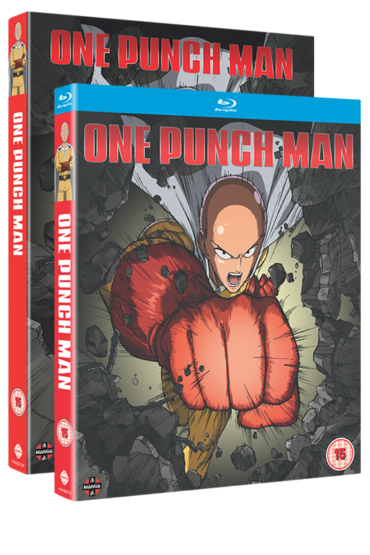One Punch Man Collection One Review
It’s a great time to be an anime fan. With each passing year, it feels like the medium experiences further growth in terms of reach, accessibility and volume. The sheer number of series being released each season has reached a point where even the most avid anime fan will struggle to keep up with the flood of new entries to the genre, without sleep and other important daily activities becoming casualties.

When us fans are so spoiled for choice, it’s often easy to forget that anime may have grown in terms of its popularity but it’s still niche enough that it has yet to be truly accepted into the mainstream as a whole (despite what viral tweets by Kim Kardashian or Elon Musk may have you believe). Then once, every so often, one breaks through. I personally experienced this when many of my friends, several of whom usually do not care for anime, asked me about One Punch Man.
Obviously, this wasn’t isolated to my group of friends, as One Punch Man became a phenomenon of the anime world upon its release and it’s easy to see why. The series lets the viewer know from the onset that it is not pulling any punches in terms of the visuals and the story revolves around the comic book superhero mythos, which in this age of the blockbuster Marvel Cinematic Universe, has never been more popular. This combination provides an effective foil for the ongoing saga of Saitama, a man who has grown so strong that he can defeat any opponent, as the title suggests, with one punch. This incredible power often turns his opponents into nothing more than a brightly coloured splash across any nearby surface, leaving no one to tell of his incredible strength. Ultimately, Saitama continues to remain without fame or glory and repeat this cycle of hollow victories as he forever yearns for a true challenge. Though he isn’t alone, he has his self-appointed apprentice in the form of a super-powered cyborg, Genos: an upstart hero who wishes to learn from Saitama and become as powerful as his master. Together they juggle fighting supervillains and world-ending threats while also fumbling through basic daily chores and tasks.
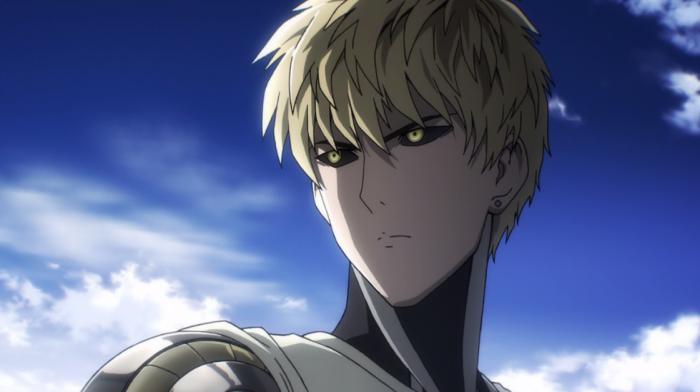
The everyday lives of Saitama and Genos are surprisingly humble and often very funny, but this is a shonen series, and the genre’s battle-centric focus provides the means for One Punch Man to show where it truly excels: its animation. The studio behind its production, Madhouse, is far removed from the stellar reputation they once had in animation, with sakuga showcases to their name such as Redline. The manga was already being illustrated in incredible detail and scope by one of Weekly Shonen Jump’s best, Yusuke Murata. Visually, the series had a huge amount to live up to. Their solution was appointing renowned director, Shingo Natsume, who was fresh off directing another of anime’s best and most varied series in terms of animation, Space Dandy. Most of the animators were outsourced with high calibre professionals coming from other well regarded series such as Space Dandy, Attack on Titan, My Hero Academia, Little Witch Academia, Boruto, Kill la Kill, and Fullmetal Alchemist: Brotherhood to name but a few examples. The production of One Punch Man is a who’s who of the medium’s most skilled traditional and webgen animators, creating some of the most outstanding and varied action sequences in anime.
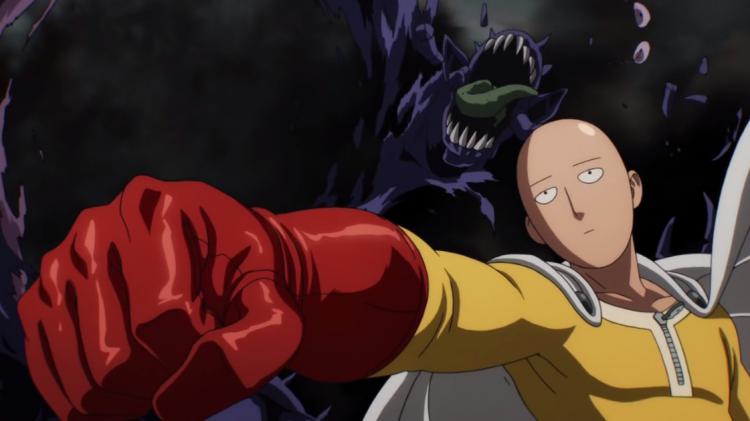
The bombastic visuals of One Punch Man are its most obvious selling point; however, saying that this is the series’ only triumph would be omitting another of its great qualities: its writing. This is greatly owed to its unconventional source material in the form of the manga. Written (and originally drawn) by its enigmatic author, One, his self-aware take on the shonen battle anime playfully pokes fun at its tropes, while also basking in all the ridiculous glory the genre has to offer. On paper, the overpowered nature of Saitama’s strength and ability to defeat anything in a single punch should stifle and disrupt any flow or build-up of tension that we would typically experience in a shonen anime, however, even with this insanely overpowered skill set, the story still manages to produce some of the most memorable conflicts in anime. Whether it be through its eclectic cast of heroes and villains, or by Saitama’s inability to adhere to good timekeeping and follow simple directions, the series consistently finds a way to deliver exciting and gratifying fights. Even if they will, more than likely, be ended with a solitary punch.
What separates One Punch Man from many other shonen that tend to aim for a younger demographic is its tone. The action and superhero premise could have easily settled this series into this side of the genre, but the self-aware nature of One’s story touches not only on universal issues but often very common mature challenges. Both as an everyday citizen and as a super-powered individual, Saitama is going through an existential crisis. In the beginning he questions his purpose in life while struggling to get a job and after training he becomes the most powerful person in the world, but nothing really changes for him in terms of fulfilment. Saitama may be able to topple otherworldly titans and squash whole armies, but he still goes through the same complex emotions many, both young and old, go through: everyday insecurities; finding a sense of direction and purpose. On the surface, One Punch Man is about showcasing big ideas and action, but where it subverts expectations is not only how it approaches this action but also how humble and grounded its story can be.
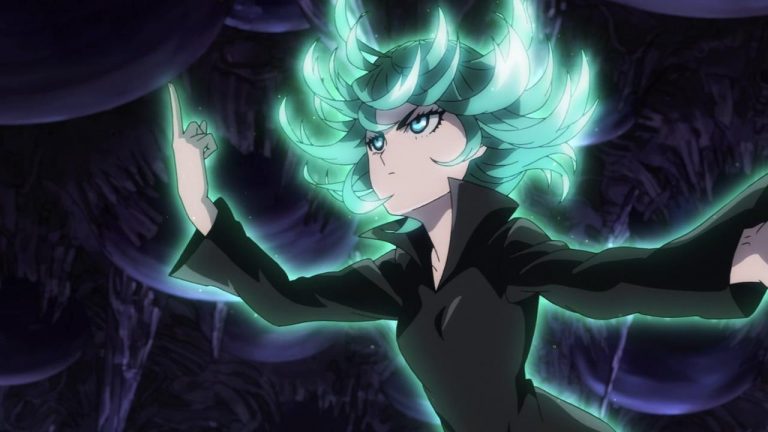
In terms of extras, across this two-disc set we have 6 OVAs that act as smaller side stories in the series (all around 10 minutes each). There is a special with staff and cast interviews involving both English and Japanese voices for Saitama as well as the director, dub producer, and additional English-speaking cast members from the season. The voice cast of the show are great across both versions, with both Makoto Furukawa and Max Mittelman’s performances as Saitama being obvious standouts. They both manage to voice the often low energy character with enough nuance that he remains interesting, as well as portray his larger tantrums and comedic failures with performances that lend to the writing and ever-changing animation styles.
The extras also include textless opening and closing titles for the series, the opening song being ‘THE HERO!!’ by Jam Project. This is a high energy, guitar wailing, power metal song with screeching vocals that suit the over-the-top nature of the show perfectly. This sentiment is probably why the closing feels like such a surprise, being a very sombre song by contrast: ‘Hoshi Yori Saki Ni Mitsukete Ageru’ by Hiroko Moriguchi. It follows a common trend with shonen anime, having a much more subdued closing song than the intense opening. It is still upbeat, but much more playful and relaxing with its accompanying female vocals, helping us come down after each episode finishes with another landscape-altering punch.
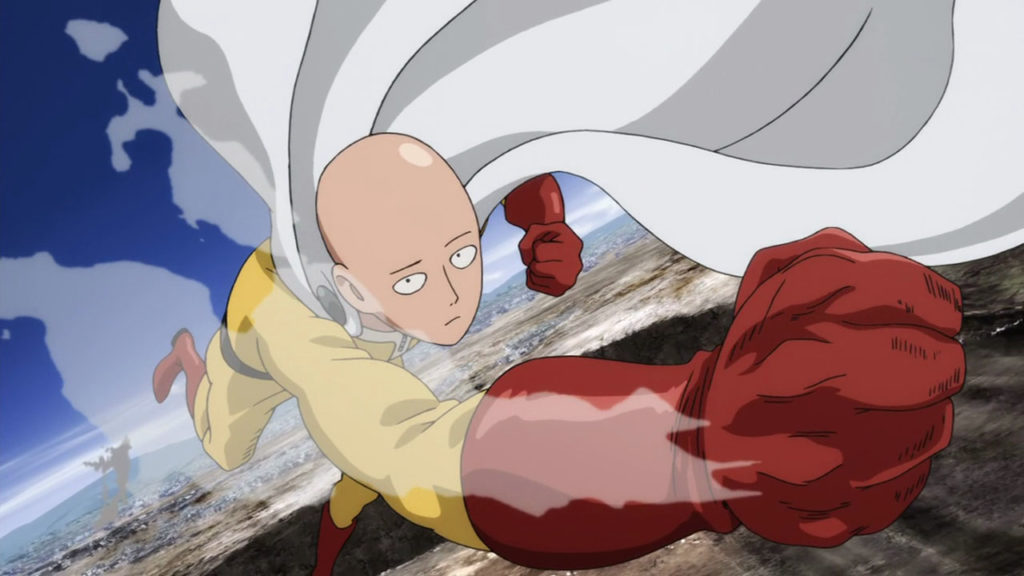
One Punch Man is a series I enjoyed when I first watched it years ago and nothing has changed when I watch it now. I still find it an incredibly enjoyable series that has me grinning from ear to ear with every seismic punch. While it may not win over detractors of the shonen genre, it still represents an incredible benchmark in animation that can be appreciated by anyone. Several titles are being released early this year by Manga, several of them are re-releases of titles that formerly had releases in the UK and I am glad that among them is One Punch Man. Particularly if it will give more opportunity for people to experience it for the first time. It really is a great time to be an anime fan.


